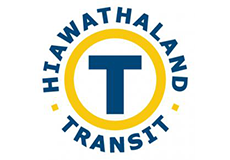
About Hiawathaland Transit (HT)
- DR paratransit agency operating in southeastern Minnesota
The Problem / Challenge
- Decrease errors and incorrect scheduling in order to improve service to their community of riders
Solution
- Software implementation streamlines data entry
- Reports suggesting optimal routes
Results
- 95% reduction in errors
- 28% overall increase to ridership
About Hiawathaland Transit (HT)
Hiawathaland Transit (operated by Three Rivers Community Action) is a rural/small urban public transportation company that spans over 4 counties and 17 cities. They provide a combination of deviated flex routes, paratransit vehicles and volunteer drivers, serving communities in southeastern Minnesota. But more than just a demand response transit agency, they are an important and well-loved member of the communities in which they operate. They serve a wide variety of rider-type, from: school children, elderly care and those with special needs. For them, customer satisfaction, safety and being reliable were the major things they wanted to maintain. Since their inception, their goal has been to provide affordable and reliable transport to those would otherwise not have access to certain areas.
For over 20 years, they have grown their business from humble beginnings. They began with a single paratransit vehicle operating within only a single community. They operated like they were just a friend helping a friend get across town. Simple stuff. And this is something that they want to maintain to this day.
The Problem / Challenge
However, as ridership grew and service needs increased, they quickly discovered the benefits of more efficient scheduling, trip booking and driver management. In other words, things just started to get out of hand and everything began to suffer. But first and foremost, the riders took the brunt of the decline in quality service.
Because their mandate was (and still is) to provide the best customer service and experience possible, they deeply desired to find a solution that could maintain both their personal devotion to their communities as well as increase in size the number of vehicles and drivers available.
“…our error rate was quite high.”
– Amy Repinski, Executive Director
In the early days of operation, Hiawathaland Transit dispatchers worked manually, entirely with paper manifests. At the time, with only a small fleet to deploy, this system served them well enough. But as the area to which they extended service and demand increased, they found that paper manifests simply weren’t going to work. Because inputting data into on paper is prone to human error and in some cases, missing altogether, their schedulers and dispatchers found it quite difficult to keep their riders happy. Suddenly, where they were once regarded as dependable, riders found that problems developed.
- Days would be forgotten on subscriptions
- Individuals were left on schedules they had previously cancelled
- Radio channels were backlogged preventing communication
“Customers were not being helped properly and our service suffered because of it.”
This became a huge problem for HT, and of course, they were at risk of losing riders due to the decline in dependability.
Paratransit Software Solution
Customer satisfaction was the goal. After seeking out a number of options, Hiawathaland Transit discovered the power and efficiency of TripSpark’s paratransit software. Together we built a solution that addressed the issues they faced with their community, their ongoing growth and their concerns about setting up a brand new system for their transit operation. The main problem that our demand response software fixed was with scheduling of repeat riders. Because the database is flexible and accessible, vital information is stored forever, always ready for quick reference. This was a huge benefit to an agency that wanted to be able to promise on-time service and “remember” the needs of each individual rider.
“From implementation to maintenance support, they have been very knowledgeable, accommodating, timely and easy to work with.”
The implementation time went smoothly, which meant that operators and dispatchers could immediately begin using the system. Whatever questions arose, our friendly support team was able to provide the most useful information and help when they needed it most.
The Result
After the paratransit software was installed and up and running, HT saw an immediate improvement in a number of areas. First and foremost, there was a reduction in the errors that they had previously encountered when entering information manually over inputting the same info digitally. Reports showed that more optimal routes should be chosen and schedules manipulated in order to make things run smoother. Using the data, they were able to calculate better routes and better schedules, saving time and money.
“We have seen a 95% reduction in errors.”
Calls for repeat rides are handled accurately and swiftly, saving much needed time. Dealing with numbers is less important than dealing with riders. Because they corrected incorrect scheduling problems as well as increased the efficiency of routes, the riders are now far more satisfied and happy with the service. As a result, complaints are way down.
“Ridership has also increased 28%.”
Together, Hiawathaland Transit and TripSpark demand response software has created a transit solution that increased ridership and improved customer service, by reducing errors and improving transit routes.
